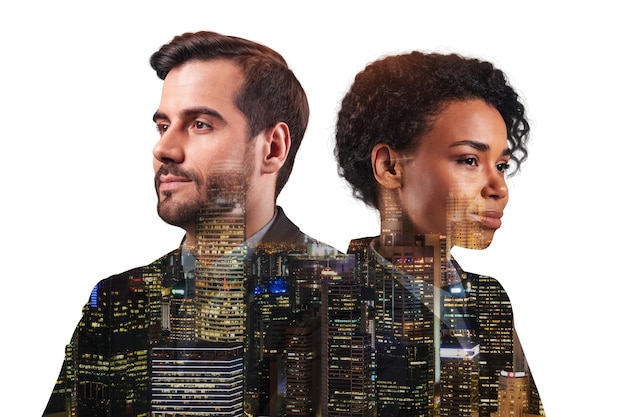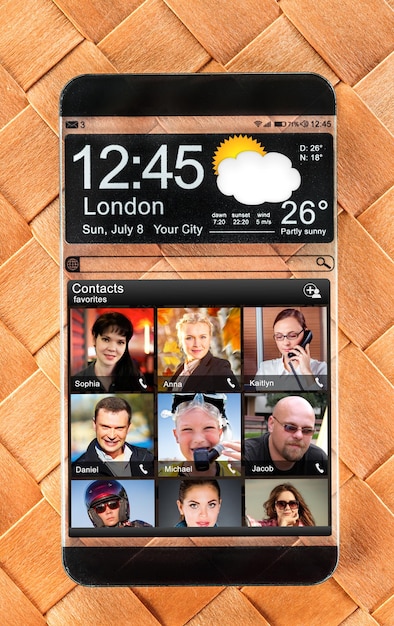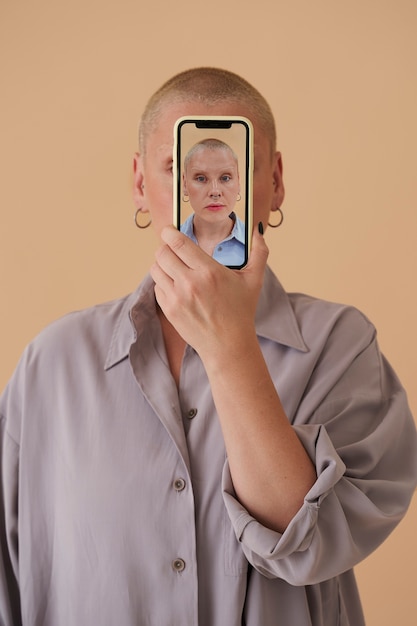Reverse Aging Filters: Will They Crash in 2025?

Reverse aging filters are experiencing a surge in popularity, but their sustainability and potential impact on self-perception raise concerns about whether this trend will last beyond 2025.
Are reverse aging filters the next big thing, or are they just a fleeting trend destined to crash and burn? The allure of instantly shedding years from our appearance is undeniable, but beneath the surface lies a complex web of technological limitations, ethical considerations, and potential psychological impacts. Let’s dive into the age – or rather, anti-age – old question.
The Rise of Reverse Aging Filters
Reverse aging filters have exploded in popularity, thanks to social media platforms and their constant quest for engaging content. But what exactly are they, and why are they so appealing?
What are Reverse Aging Filters?
These filters use sophisticated AI algorithms to analyze facial features and then digitally manipulate them to create a younger-looking version of the user. They smooth wrinkles, tighten skin, and even reshape facial contours to mimic the appearance of youth.
Why the Hype?
The appeal is simple: instant gratification. In a society obsessed with youth, these filters offer a quick and easy way to achieve a more youthful appearance without resorting to expensive cosmetic procedures. They tap into our desire to look our best and present an idealized version of ourselves to the world.

Here are the key benefits that make reverse aging filters so attractive:
- Instant results with no commitment.
- Easy to use and widely accessible.
- Offer a glimpse into how we might look with cosmetic enhancements.
While they seem harmless on the surface, the long-term consequences of relying on these filters for self-esteem and validation are not fully understood.
The Technology Behind the Filters
Understanding the technology behind reverse aging filters helps us appreciate their capabilities and limitations. These filters rely on cutting-edge AI and machine learning techniques.
AI Powering the Illusion
The core of these filters is AI that has been trained on vast datasets of facial images. The AI learns to recognize patterns and features associated with youth, such as skin texture, wrinkle density, and facial structure. When a user applies the filter, the AI adjusts these features in real-time to create a younger-looking appearance.
How the Algorithms Work
The algorithms analyze facial features, identify areas of concern (wrinkles, blemishes, etc.), and then digitally smooth or alter these areas. They use techniques like:
- Facial recognition to map key points on the face.
- Texture analysis to smooth skin and reduce wrinkles.
- Morphing to subtly reshape facial contours.
The Limitations of AI
Despite their sophistication, these filters are not perfect. They can sometimes produce unrealistic or artificial results, especially in challenging lighting conditions or when applied to faces with strong expressions. The technology is constantly evolving, but it still has limitations.
The ongoing development of AI promises even more realistic and sophisticated filters in the future, blurring the lines between reality and digital enhancement even further.
Ethical Considerations and Concerns
The widespread use of reverse aging filters raises several ethical questions and concerns about their impact on society and individual well-being.
The Impact on Self-Perception
Constantly seeing filtered versions of ourselves can distort our self-perception and create unrealistic expectations about beauty and aging. This can lead to feelings of inadequacy, anxiety, and even depression.

Setting Unrealistic Standards
Reverse aging filters contribute to the creation of unrealistic beauty standards that are unattainable in real life. This can put pressure on individuals to conform to these standards, leading to increased use of cosmetic procedures and other beauty enhancements.
Here are critical concerns that should be considered:
- Distorted body image and self-esteem.
- Increased pressure to conform to unrealistic beauty standards.
- Potential for addiction and dependence on filters.
Open discussions about the ethical implications of these filters are essential to raise awareness and promote responsible use.
The Longevity of the Trend: Will It Last?
The big question is whether reverse aging filters are a passing fad or a lasting trend. Several factors will determine their long-term viability.
The Novelty Factor
The initial appeal of these filters is largely due to their novelty. As more people use them and the novelty wears off, their popularity may decline. Trends often have a limited lifespan, and reverse aging filters may follow a similar trajectory.
Technological Advancements
If the technology continues to improve and become even more realistic, reverse aging filters may become a permanent fixture in the digital landscape. However, if the technology plateaus or becomes too predictable, their appeal may fade.
To consider if they’ll last, remember these points:
- Constant innovation is needed to maintain user interest.
- Ethical concerns and public perception will play a crucial role.
- The rise of alternative trends could overshadow reverse aging filters.
Cultural Shifts and Acceptance
Cultural shifts towards embracing natural aging could also impact the popularity of these filters. As society becomes more accepting of wrinkles and other signs of aging, the desire to use these filters may diminish.
Riding the Wave Responsibly
If you choose to use reverse aging filters, it’s important to do so responsibly and with awareness of their potential impact. Here are some tips for navigating this trend in a healthy way.
Mindful Usage
Be mindful of how much time you spend using these filters and how they make you feel. If you notice that they are negatively impacting your self-esteem or body image, consider taking a break or limiting your use.
Focus on Authenticity
Remember that your real self is beautiful and valuable, regardless of what filters might suggest. Focus on cultivating self-acceptance and celebrating your unique qualities.
Balancing Digital and Real Life
Take care to balance your online presence with real-life experiences and relationships. Engage in activities that make you feel good about yourself and connect with others in meaningful ways.
To ensure responsible use, remember:
- Set boundaries and limit usage time.
- Practice self-compassion and celebrate your natural beauty.
- Seek support from friends, family, or a therapist if needed.
By using these filters in a mindful and responsible way, you can enjoy their entertainment value without sacrificing your self-esteem or mental well-being.
Alternative Trends and the Future of Beauty
While reverse aging filters are currently popular, there are other emerging trends in the beauty industry that could potentially overshadow them. Shifts in cultural values play a critical role.
Embracing Natural Beauty
A growing movement is advocating for the acceptance of natural aging and the celebration of individual differences. This trend emphasizes self-care and wellness over cosmetic enhancements and unrealistic beauty standards.
The Rise of Inclusive Beauty
The beauty industry is becoming more inclusive, with brands offering products and services that cater to a diverse range of skin tones, body types, and ages. This trend promotes self-acceptance and challenges traditional beauty norms.
Technological Innovations
New technologies, such as personalized skincare and virtual makeup, are offering alternative ways to enhance beauty without relying on filters or cosmetic procedures. These innovations focus on enhancing natural features and promoting healthy skin.
Key Takeaways for Beauty Trends:
- Focus on authenticity and self-acceptance is growing.
- Inclusivity and diversity are becoming increasingly important.
- Technological innovations offer new ways to enhance natural beauty.
The future of beauty is likely to be more diverse, inclusive, and focused on enhancing natural features rather than erasing the signs of aging.
| Key Aspect | Brief Description |
|---|---|
| ✨ Popularity Surge | Reverse aging filters gain immense traction on social media. |
| 🤖 AI Technology | AI algorithms analyze and digitally manipulate facial features. |
| 🤔 Ethical Concerns | Impact on self-perception & unrealistic beauty standards questioned. |
| ⏳ Trend Longevity | Sustainability is predicted to significantly decline by 2025. |
FAQ
Reverse aging filters are digital tools that use AI to manipulate your face, making you look younger. They smooth wrinkles, tighten skin, and reshape features.
Their popularity comes from the desire for instant results without commitment. They offer a quick and easy way to achieve a more youthful appearance on social media.
Ethical concerns include the distortion of self-perception, setting unrealistic beauty standards, and the potential for addiction or dependence on filters.
Their longevity is questionable. The novelty may wear off, and societal shifts toward natural beauty could diminish their appeal. The need is high for constant innovation.
Use them mindfully, set boundaries for usage, focus on authenticity, balance digital life with real-life experiences, and cultivate self-acceptance.
Conclusion
While reverse aging filters offer a fun and easy way to experiment with a younger look, it’s crucial to be aware of their potential impact on self-esteem and body image. As we approach 2025, the future of this trend remains uncertain. The key is to use these filters responsibly, focusing on self-acceptance and celebrating your natural beauty, as it is up to each individual.
